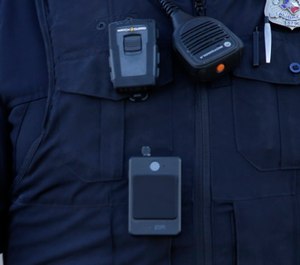
The trend toward prioritizing collaboration continues to grow in the grant world
More often than not, funding agencies are requiring that partnerships be included in any project design to be considered for a grant award.
It may be a grant requirement that a portion of the grant award is given to a community nonprofit agency, or that law enforcement and local government agencies contribute resources as part of the cash or in-kind match requirement of a grant. Practitioner/researcher partnerships might also be required to ensure that what is proposed in a grant application is evidenced-based.
This trend toward collaboration and partnership continues to grow in the grant world because it makes sense on many different levels. Here are four benefits:
1. Collaboration ensures broader support
Many funders see this requirement as an opportunity for a community to come together to address critical problems and propose solutions that require additional financial support. Funders are often comfortable supporting a strategy that has several voices and support from many facets of the community rather than fund siloed requests.
2. Collaboration maximizes resources
Federal, state and foundation grant-funding levels vary each year. Economic conditions, natural disasters and shifting priorities greatly change the grant funding landscape from one year to the next. Funders are more apt to fund a large equipment purchase that will be used as a regional asset by many agencies rather than fund redundant equipment across a community.
3. Collaboration achieves economies of scale
In some instances, funding agencies require a single organization to apply on behalf of the component agencies. This not only promotes cooperative purchasing resulting in reduced overall costs but also leverages partnerships that may not have existed without this grant opportunity. The most recent federal Body-Worn Camera grant opportunity is an example of this type of approach. One of the four categories in which agencies could apply was as a state or regional consortium, representing several law enforcement agencies. The lead applicant could be a state agency, regional law enforcement agency or major city or county agencies, acting on behalf of a joint partnership or consortium.
4. Collaboration enables non-traditional funding sources
Collaborating on grant applications with other agencies may allow you to obtain equipment or other needed assets from non-traditional funding sources. Your agency may not be eligible to apply for certain grants but one local agency may and could purchase the equipment on your behalf or sub-grant the funding to you if allowable. For example, if your agency needs 3-D laser scanners for forensic crime reconstruction , your local fire department may need the same piece of equipment for arson investigation. Your local fire department is eligible to apply for the Assistance to Firefighters Grants (AFG) through FEMA, local law enforcement agencies are not. Partner with your local fire department on a community-wide public safety strategy and let the fire department purchase the equipment for use as a regional asset. It’s a win-win for all!
Here are four considerations for developing successful partnerships:
1. Identify your partners early
Don’t wait until you are up against a grant application deadline to develop your partnerships. Many funders require that you document your partners’ role and commitment to the project by including formal memorandums of agreement or letters of collaboration as part of your application package. This can be a time-consuming process.
2. Prepare talking points
Draft talking points to describe your ideas, outline the possible role for each partner and relay the benefits of the collaboration. This will go a long way in convincing agencies to commit to the partnership.
3. Develop partnerships with each sector of the community impacted by your proposed project
Partners could include fellow law enforcement agencies, local schools, colleges and universities, emergency management agencies, fire, EMS and other first responders, local businesses, community non-profit agencies, treatment providers, civic and volunteer organizations, faith-based organizations, workforce development boards, federal and state criminal justice and non-criminal justice agencies. The more unified and collaborative your proposed strategy, the more competitive you will be in the eyes of grant funders.
4. Keep partners engaged throughout the project period
It is important to involve your partners early on as you implement your grant-funded project and keep them engaged throughout the project period. Consider forming an advisory group of partner representatives and convene meetings frequently throughout the grant period. Invite these representatives to events you are holding in your community whether it is part of the project or not. Sustaining these relationships may open doors for future grant opportunities, resource sharing and no-cost assistance from agencies across your community and beyond.
The Team at PoliceGrantsHelp is always available to assist. We can provide personalized grant consulting, and can also assist through our grant writing and grant application review services.
Copyright © 2025 PoliceGrantsHelp.com. All rights reserved.
